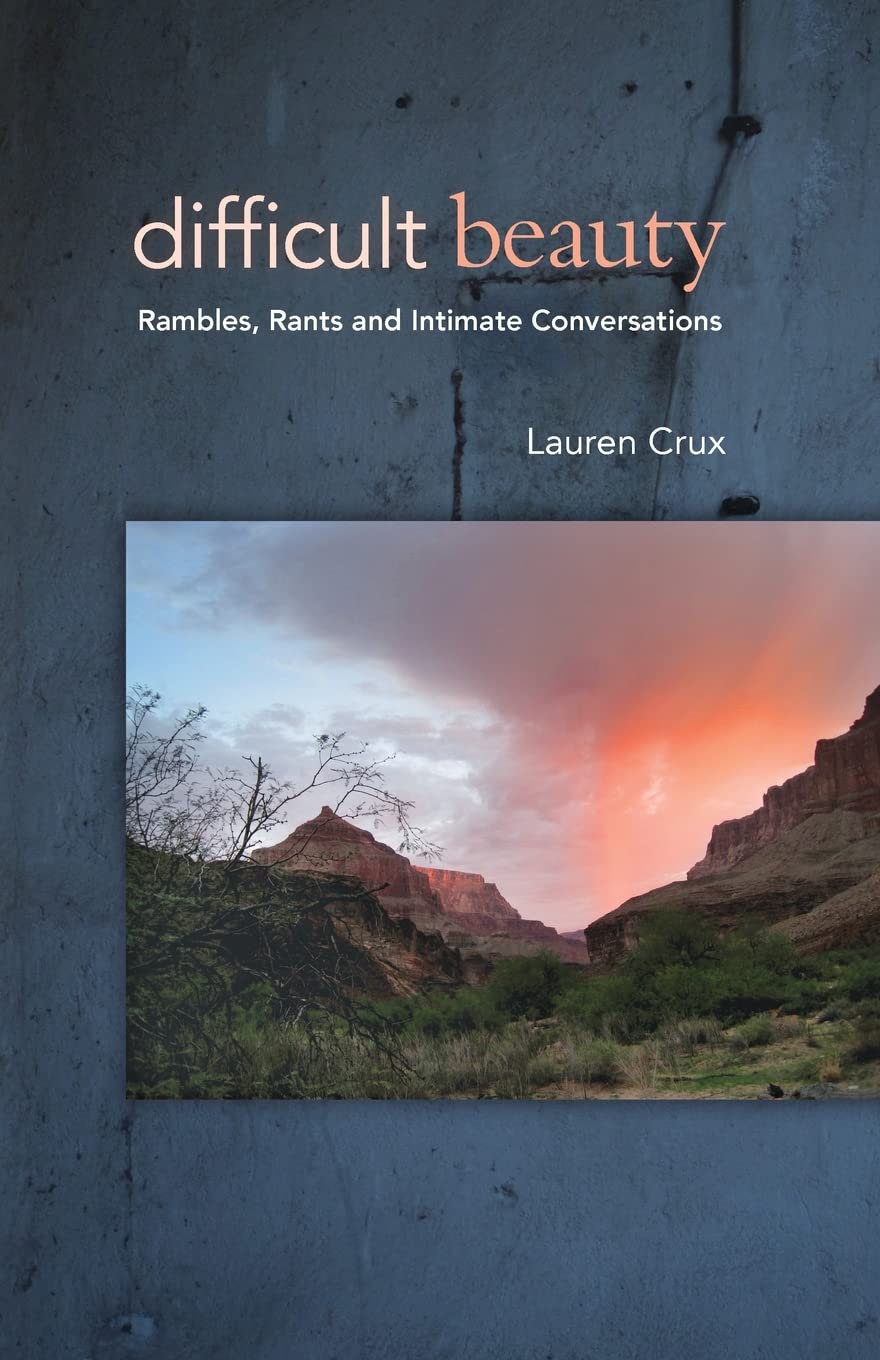
Difficult Beauty: Rambles, Rants and Intimate Conversations
Lauren Crux
Many Names Press, 2023, 166 pages
$25.00
Reviewed by Marilyn DuHamel
Lauren Crux, a Santa Cruz, California writer and photographer, has recently published a stunning, singular book titled Difficult Beauty: Rambles, Rants and Intimate Conversations. Through the years, I’ve been in awe of her many talents: writer, poet, photographer, and performer.
Lauren’s book came out during a very busy time in my life, but once I had it in my hands, I had to take a peek. Soon, I was reading page after page after page and found myself—sometimes in the course of a single page—chortling, tearing up, raising my eyebrows, putting my hand on my heart, or pausing as I gazed upwards, savoring an unexpected insight. Finally, I had to wrench myself away because I wanted to sink into each ramble. The book is that compelling.
Yet, describing this collection is a challenge because it defies categorization, which is part of what I love about it. I turn to the words of another wonderful writer, Camille T. Dungy, who manages to capture the book’s essence:
“The language here is sheer poetry, but these are not meant to be read as poems. They are tiny letters, photographs, journal entries, “rants and intimate conversations,” all of these together and more. On each candid page, Crux reveals what she sees, how she feels, how she hurts, how she celebrates” (Dungy, October 2021).
The work also has an equally important visual element: each short writing is paired with one of Lauren’s original abstract photographs. She stresses that the images are meant to be in conversation with the writing, not to illustrate it. In the words of the poet Gary Young, “[these are] photographs that neither illustrate, nor make any suggestion as to how the poems should be read—are simply companions on the journey of this moving collection” (Young, October 2021).
Lauren’s style is pithy, provocative, and poignant. It’s funny, irreverent, and heartbreaking. Exploring moments and intervals on either side of the rush, rush, rush of daily life, she claims her ordinariness without fuss. “You know, sometimes it feels good to get out and be a lesbian. And sometimes, it feels equally good to stay at home and be a lesbian” (Ramble #34).
She takes on many topics, ranging from the commonplace (and sometimes goofy) moments of daily life to the times that stun us into silence or fury. For example, when the cancer doctor says to her lover, “If you are done with your breasts have a mastectomy,” (Ramble #47), we not only register horror, but we laugh and cry in these moments. She describes her own sense of momentary helplessness and despair in the face of contemporary geopolitical trauma—“I feel scraped raw” (Ramble #22).
With a humorous and witty gentle touch, Lauren asks us to hold fire and ice simultaneously; she insists on complexity of existence, because, “The heart will understand” (“Life Review,” following Ramble #64).
Lastly, when I have traveled in the past, I never can manage to avoid checking a bag, in part because I take too many books. On this last trip, I was determined to just take a carry-on. I winnowed down my clothing, tossed out the third pair of shoes, and took only one book. Difficult Beauty is what made the cut. Like a well-chosen shirt or pair of pants that work for any occasion, I knew this book would take care of me, whatever my mood, whatever my needs.
Marilyn DuHamel is drawn to wilderness—internal and external—and has worked in forestry and fire look-out towers, then as a psychotherapist for the last three decades. Moved by her experiences of call and response with the more-than-human world, her current book project and her blog, Earth Dialogues, explore connections with the natural world and archetypal realms of dreams and synchronicities. Her writing has appeared in Kosmos Journal, Dark Matter: Women Witnessing, the anthology Second Wind, and blog postings for Native Animal Rescue. She lives outside of Santa Cruz, California, surrounded by old-growth chaparral.